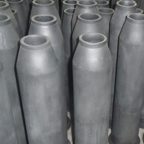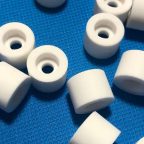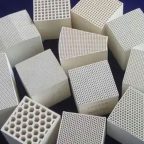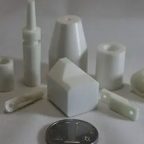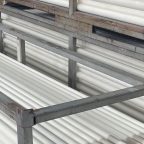The zirconia ceramic products we know have very good toughness. They fall intact from a height of 1 meter, are very resistant to falling, and have very good wear resistance. They are very practical in various fields. Then such zirconia ceramic machining is How is it? Next, Pintejin Ceramics, a manufacturer specializing in the production of zirconia ceramics and alumina ceramics, will focus on the detailed process of zirconia ceramics machining. Zirconia ceramic ring Zirconia ceramic machining flow:
The first step of zirconia ceramic machining: procurement of raw materials, that is, zirconia powder, zirconia powder is white heavy amorphous powder. Odorless. Tasteless. Soluble in a mixture of 2 parts of sulfuric acid and 1 part of water, slightly soluble in hydrochloric acid and nitric acid, slowly soluble in hydrofluoric acid, and almost insoluble in water. irritating. The relative density is 5.85. Melting point 2680 ℃. Boiling point 4300 ℃. Harder than diamond. The second step of zirconia ceramic machining: ceramic molding. The ceramic molding of Pintejin ceramics mainly includes three molding methods: injection molding, dry pressing and isostatic pressing. As for which molding method to use, it mainly depends on the shape of the product, Quantity and performance, different molding methods will have slight differences in product performance.
Zirconia ceramic plunger The third step of zirconia ceramic machining: ceramic sintering, ceramic sintering is a general term for the densification process and phenomenon of ceramic green bodies at high temperatures. The sintering temperature of zirconia ceramics is 1450°C, and the sintering temperature of alumina ceramics is 1680°C. Their sintering process is to first heat up to about 300°C at the first node, continue to heat up to the highest temperature point, and then keep the temperature for a few hours before starting to cool down. , the material can be taken out of the sintering furnace until it is finally below 100°C.
The sintering time of isostatic pressing and dry pressing is about 7 days for the whole process, and the sintering time for injection molding is about 3 days; ceramics have a certain shrinkage rate during the sintering process, and the approximate data is about 1.3. And the shrinkage rate of zirconia ceramics and alumina ceramics is different, so before making each product, we will calculate the size in advance to leave a margin for machining. The fourth step of zirconia ceramic machining: ceramic finishing, finishing mainly includes a series of finishing such as drilling, grinding and mirror polishing. The last step in the machining of zirconia ceramics is quality inspection.
Pintejin Ceramics strictly controls the quality of the products, so that customers can buy with confidence and use them with confidence. Pintejin Ceramics is a professional manufacturer of industrial ceramics, mainly engaged in the research and development and production of zirconia ceramics and alumina ceramics. We can process ceramic products according to your drawings, specializing in the production of high-precision ceramic rods, ceramic tubes, ceramic rings, ceramic plates, ceramic flanges, ceramic nozzles, and customized precision ceramic parts, etc.
Pintejin machining ceramic service include : Alumina Ceramic Parts, Zirconia Ceramic, Silicon Carbide Ceramic, CNC Machined Aluminum Nitride Ceramic, Machinable Ceramic Parts, Glass Ceramic,Macor Ceramic,Powder Metallurgy Dies,Ceramic Injection Molding,Ceramic Dry Pressing,Ceramic Extrusion Dies
